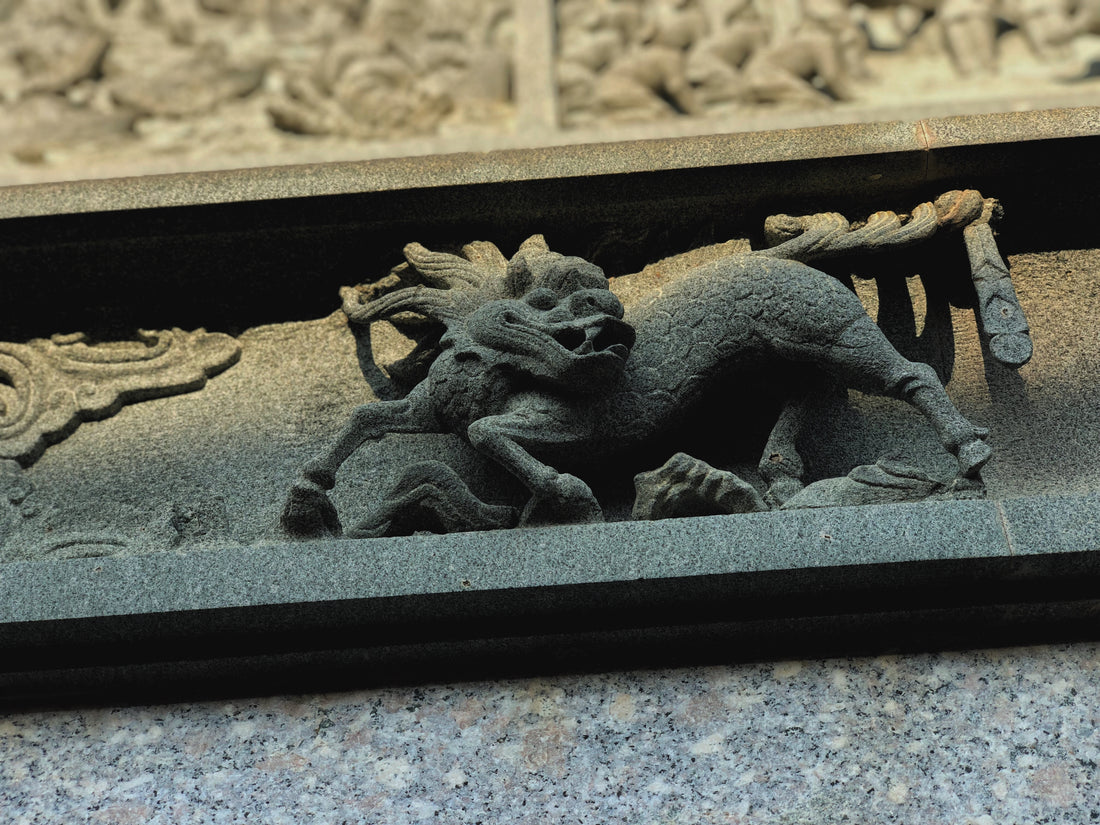
The meaning of the Qilin in classical Feng Shui: A symbol of luck and harmony
Amira Coll ExpositoShare
In Chinese mythology, the Qilin is one of the most important animal beings next to the dragon. Also known as Chi Lin, Kirin or Kylin, the Qilin is widespread in China and often serves as a protective symbol in front of house gates, tombstones or as a talisman for luck and prosperity.
The Qilin is a mystical animal symbolizing prosperity, wisdom, luck and longevity. It is said that looking into the eyes of the Qilin brings abundance, prosperity and health to its owner. The beast embodies all five elements and is often associated with the element of fire.
What does the Qilin look like?
The qilin's appearance varies, but typically has either a dragon's head or a deer-like head with flame ornaments, two horns, ox hooves, and the scales of a carp. The qilin's body is often engulfed in fiery flames.
What else should you know about the Qilin?
The Qilin is said to carry great wisdom. Its importance derives from the fact that in Chinese mythology it has often appeared to great rulers at the birth or death. The Qilin not only stands for wisdom, but also for grace, purity and it is even said to have healing powers.
Because of its appearance, the Qilin is also known as the "Chinese unicorn" and is considered the purest being. He is characterized by his peaceful nature, friendliness and virtue. Described even as a vegetarian, he glides through the air lightly and carefully, avoiding killing an insect or trampling on the grass.
And how do you use the Qilin?
The qilin is also used for more wealth and happiness. For example, it is placed on ancient Chinese coins or bullion to gain more abundance and wealth. Placing the qilin on the desk or work area represents professional success and protection. In the center of the house (Tai Qi), the Qilin stands for joy, prosperity and health.
How do you use the Qilin in Feng Shui?
The Qilin plays an important role in classic Feng Shui and is considered a powerful symbol of wisdom, justice, peacefulness and longevity. In Chinese mythology, the Qilin is described as a being who combines the characteristics of the dragon, the horse, the deer and the buffalo. In feng shui, the qilin is often used to ward off negative energies and promote the well-being and happiness of the home.
The qilin is particularly important in relation to the so-called "three deaths" (San Sha), the "great duke" (Tai Sui) and the "year breaker" (Sui Po). These three influences are seen as very negative energies that can cause illness, accidents, financial loss, and relationship problems. To ward off these negative influences, the qilin is placed on the affected sector to ward off bad luck and negative qi.
In addition, the Qilin can also help to improve the overall well-being in the home. Through its presence it can harmonize the Qi (life energy) and create a positive atmosphere in the house. Many people also use the qilin as a talisman or lucky charm to achieve personal goals and promote their own happiness.
Overall, the qilin is an important part of feng shui and can help ward off negative energies and improve well-being in the home. Whether as a talisman, lucky charm or decorative element - the qilin is a powerful symbol that can positively influence people's lives.